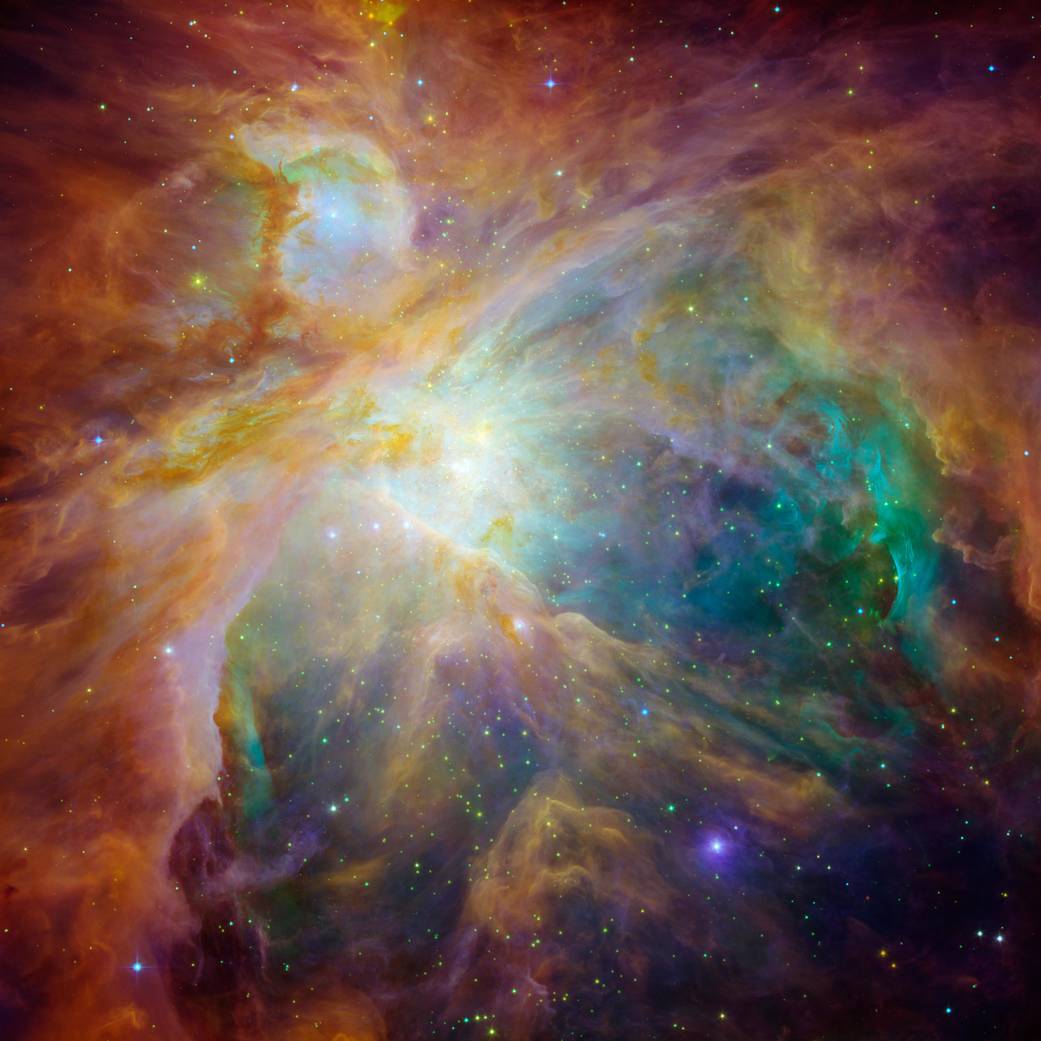Gaseous swirls of hydrogen, sulfur, and hydrocarbons cradle a collection of infant stars in this composite image of the Orion Nebula, as seen by the Hubble Space Telescope and the Spitzer Space telescope. Together, the two telescopes expose carbon-rich molecules in the cosmic cloud of this star-formation factory located 1,500 light-years away.
Hubble’s ultraviolet and visible-light view reveal hydrogen and sulfur gas that have been heated and ionized by intense ultraviolet radiation from the massive stars, collectively known as the “Trapezium.” Meanwhile, Spitzer’s infrared view exposes carbon-rich molecules in the cloud. Together, the telescopes expose the stars in Orion as a rainbow of dots sprinkled throughout the image.
Image Credit: NASA/JPL-Caltech STScI
在这张由哈勃太空望远镜和斯皮策太空望远镜拍摄的猎户座星云合成图中,氢气、硫磺和碳氢化合物组成的气体漩涡孕育了一组新生恒星。这两个望远镜合在一起,将这颗位于1,500光年外的恒星形成工厂的宇宙云暴露在富含碳的分子上。
哈勃太空望远镜的紫外线和可见光视图显示了氢气和硫磺气体,它们被来自大质量恒星的强烈紫外线辐射加热和电离,这些恒星统称为“四边形”。与此同时,斯皮策望远镜的红外图像将云层中的富碳分子暴露出来。在望远镜的照射下,猎户座里的星星就像彩虹一样散布在整个图像中。
影像来源:NASA/JPL-Caltech STScI







